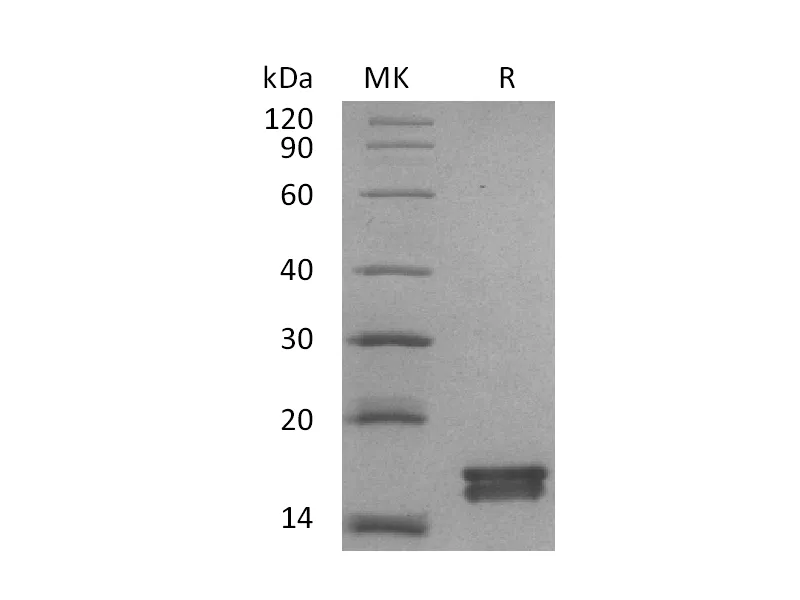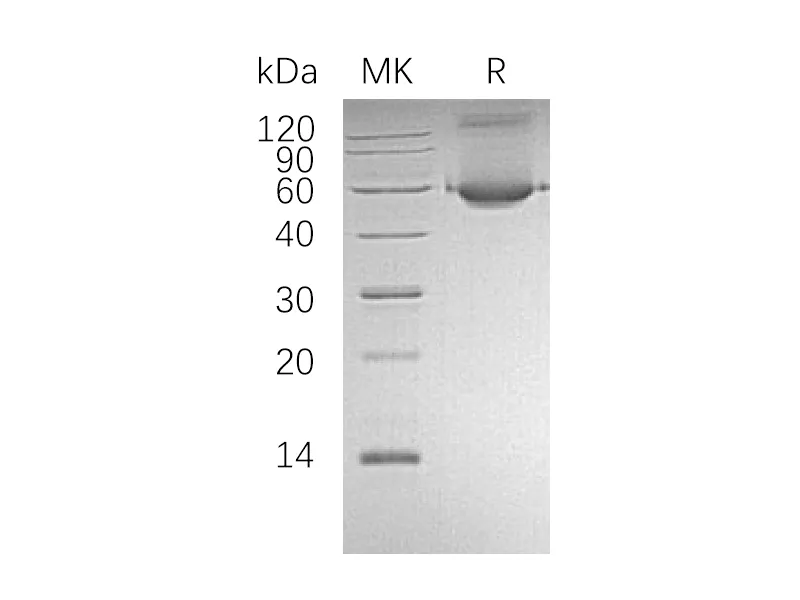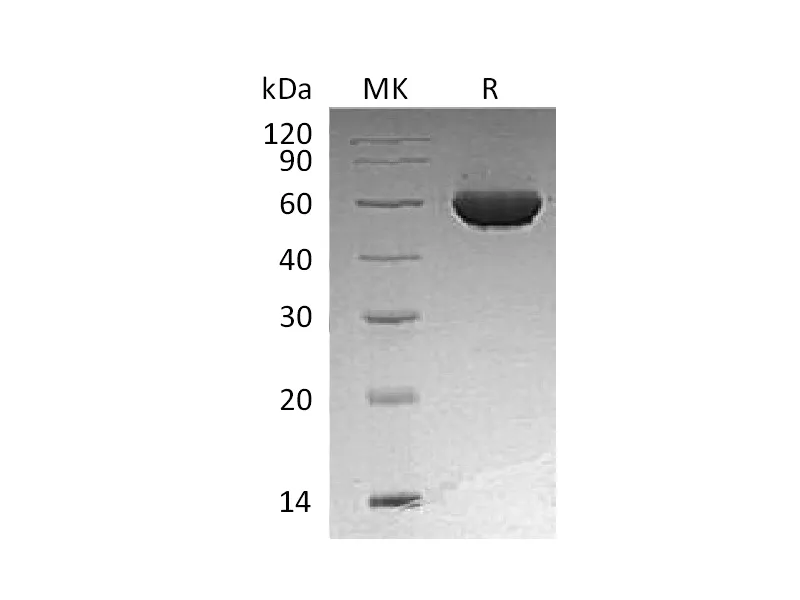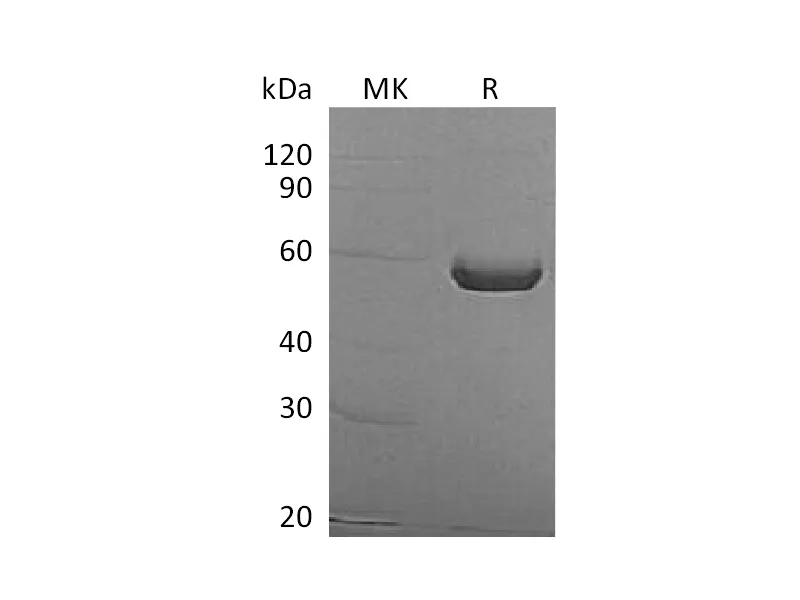Alternative Names
CD112; nectin2; Herpes virus entry mediator B; Herpesvirus entry mediator B; HveB;Murine herpes virus entry protein B; mHveB;Poliovirus receptor homolog; Poliovirus receptor-related protein 2; Pvrl2
Background
Nectin-2( CD112) is a member of the nectin family, which contains two Ig-like C2-type domains and one Ig-like V-type domain in the extracellular region. Nectins are type I transmembrane glycoproteins that are calcium-independent immunoglobulin (Ig)-like cell adhesion molecules (CAMs). Nectin2 is widely expressed in human tissues including brain, spinal cord, spleen, kidney, heart and liver. It can form trans-heterodimers with PVRL3/nectin-3 and interacts with CD226. Mutations of alleles of the murine CD112 gene can result in conditions such as morphologically aberrant spermatozoa. It may function in allergic reactions, and accordingly may used as a novel target for anti-allergic therapy.
Note
For Research Use Only , Not for Diagnostic Use.




